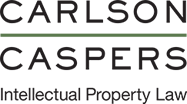In Classen Immunotherapies, Inc. v. Elan Pharms., Inc., the Federal Circuit determined that an NDA-holder’s post-approval activities fall within the scope of the § 271(e) safe harbor. 2015 U.S. App. LEXIS 7854 (Fed. Circ. May 13, 2015). Specifically, 35 U.S.C. § 271(e)(1) exempts activities reasonably relating to developing clinical data on an approved drug and submitting that information to the FDA in a citizen petition and a supplemental new drug application.
Elan holds the NDA for metaxalone (Skelaxin®), a muscle relaxant. In 2001, a third party conducted bioequivalence studies on metaxalone tablets, causing the FDA to propose identifying the product as having a bioequivalence problem. In response, Elan performed a clinical study and determined that administration with food significantly increased the drug’s bioavailability. Elan then petitioned the FDA to require ANDA applicants to submit food effect data. Elan also submitted a sNDA—a labeling supplement to the Skelaxin NDA—to revise its product label. Subsequently, Elan filed two U.S. patent applications based on its clinical bioavailability data.
Classen owns U.S. Patent 6,584,472, directed to a method for accessing and analyzing data on a commercially available drug to identify a new use of that drug, and then commercializing that new use. Classen initiated litigation against Elan in 2004, contending that Elan infringed the ’472 patent when it studied the effect of food on the bioavailability of Skelaxin®, submitted the clinical data to the FDA, commercialized the new use, and filed an application based on the results of the clinical study. In 2006, the district court granted Elan’s motion for summary judgment of noninfringement, finding that Elan’s activities fell under the safe harbor provision of § 271(e)(1). The suit was stayed until 2010 pending ex parte reexamination. After the stay was lifted, and despite the Federal Circuit’s intervening decision in Biogen holding that post-approval “routine” submissions to the FDA fell outside the safe harbor, the district court entered final judgment of noninfringement.
On appeal, Classen argued that Elan’s actions in conducting the clinical study and submitting the results to the FDA were “routine” post-approval reporting to the FDA, and thus not subject to the safe harbor. Citing the Supreme Court’s 2005 Merck decision, the Federal Circuit held that the safe harbor extends to all uses of patented inventions that are reasonably related to the development and submission of any information under the FDCA (Federal Food Drug and Cosmetic Act), regardless of the phase of research in which the information was developed, or whether the activities were undertaken with respect to a generic or branded product. The Court concluded that Elan’s clinical study and FDA submissions “clearly fall within the scope of the safe harbor.”
As to Elan’s filing of patent applications based on the clinical studies, the court vacated the district court’s infringement ruling and remanded because the district court did not determine whether or not these activities were infringing or were exempt. But the Federal Circuit did offer some guidance on the issue, explaining that use or dissemination of information obtained from an exempt clinical study does not infringe, unless the use of information itself constitutes an act of infringement. The court also advised that filing a patent application is generally not an infringement, nor is placing information submitted to the FDA on a product label after sNDA approval, as FDA-approved labeling is a legal requirement. Thus, Classen illustrates the breadth of activities that fall under the § 271(e)(1) safe harbor. The Federal Circuit’s expansive reading of “reasonably related to the development and submission of information” to the FDA opens the doors for a variety of conduct on the part of generic and brand-name companies alike, without threat of infringement liability.

